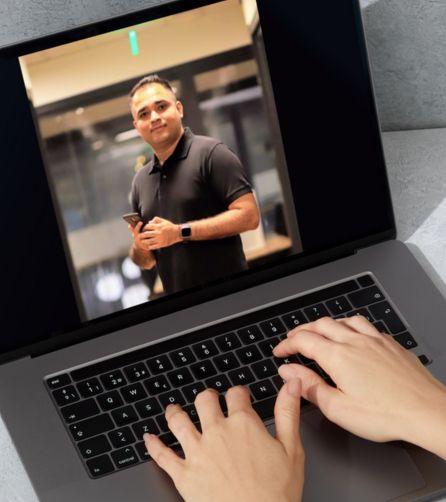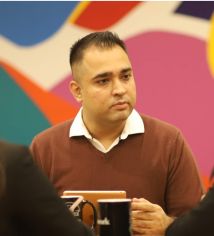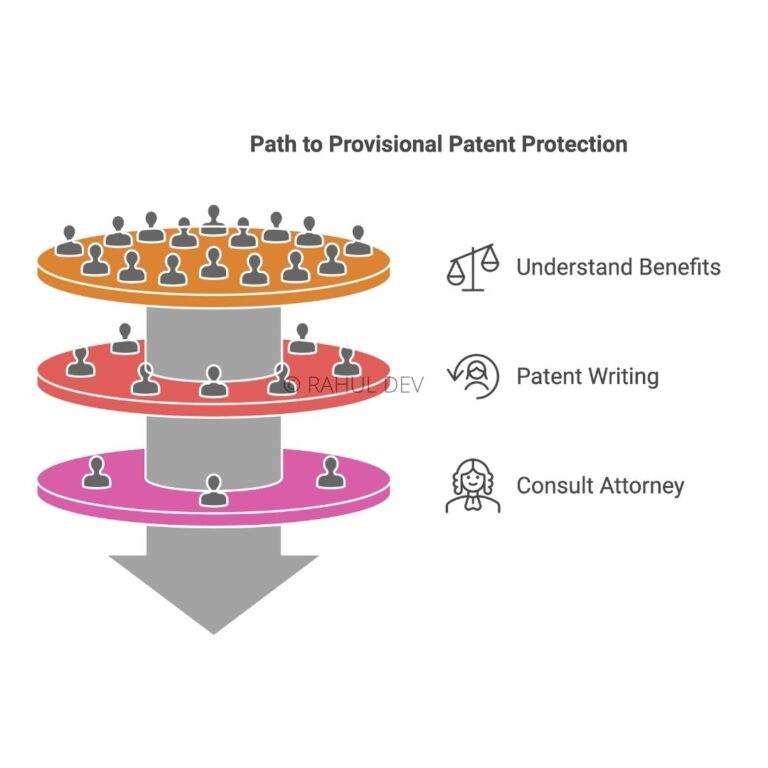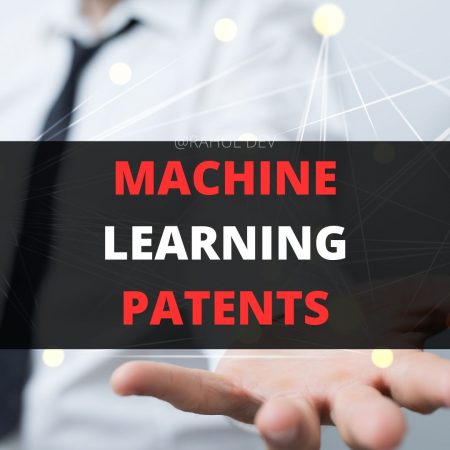AI Innovation Patents
Insights by Dr. Rahul Dev

Understand Practical Aspects
Understand the process of patenting AI inventions

Insights by Dr. Rahul Dev

Understand the process of patenting AI inventions

Protect your innovations across multiple countries and create strong patent portfolio to boost business valuation
Local and global brand protection through international trademark registrations
Extensive research and business writing for technical whitepapers and B2B content products
Here I write about advanced patent claim drafting for machine learning patents and what patent examiners exactly look for while determining the patent eligibility of machine learning patents. The current landscape of machine learning patents presents unprecedented challenges for patent practitioners navigating the intersection of artificial intelligence innovation and patent law requirements. AI patent drafting demands sophisticated understanding of both technical implementations and evolving legal standards that govern patent eligibility in the artificial intelligence domain. Recent analysis reveals that 79% of AI-related applications in USPTO Tech Center 2100 ultimately achieve allowance, demonstrating that proper patent claims for artificial intelligence can overcome initial rejections when practitioners employ effective technical anchoring strategies.
The USPTO AI guidance 2024 has fundamentally reshaped how patent attorneys approach machine learning patent eligibility by emphasizing the requirement for technical solutions to technical problems. This guidance represents a significant evolution from previous examination practices and requires practitioners to demonstrate concrete technological improvements rather than abstract algorithmic implementations. The shift affects how neural network patent claims must be structured to satisfy both novelty requirements and subject matter eligibility standards under current patent law.
Amazon’s groundbreaking U.S. Patent 11,221,833 exemplifies successful computer vision patent drafting techniques that practitioners can adapt for their own applications. The patent covers automated GUI automation patents through sophisticated UI detection patent claims that transform computer vision algorithms into concrete technical solutions. Amazon’s claims succeeded because they tied AI techniques to measurable outcomes including generating executable UI code from visual interface analysis, demonstrating the practical application required under current eligibility standards.
This article covers following topics:
Navigating Machine Learning Patent Eligibility Challenges
Filing Machine Learning Patents
Optimizing Claim Structure for Machine Learning Patent Applications
International Filing for Machine Learning Patent Applications
Advanced Technical Drafting Strategies for Machine Learning Patents
Patent Prosecution Strategy for Machine Learning Patents
Competitive Protection and Portfolio Development for Machine Learning Patents


The abstract idea doctrine AI continues to pose significant challenges for machine learning patent eligibility, particularly following the Federal Circuit’s evolving jurisprudence on artificial intelligence inventions. The Alice Mayo test machine learning applications require careful consideration of both prongs: whether claims are directed to abstract ideas and whether additional elements provide significantly more than the abstract concept itself. Patent prosecution AI inventions must address these concerns through strategic claim construction that emphasizes technical improvements over mere algorithmic sophistication.
The landmark IBM v Zillow patent case illustrates critical pitfalls in AI patent drafting that practitioners must avoid when structuring claims for machine learning inventions. The Federal Circuit AI patents decision invalidated UI/AI patents because they improved search result display without demonstrating specific technical mechanisms or concrete technical improvements. This decision reinforces the necessity for technical anchoring AI patents that demonstrate how machine learning systems produce measurable technical effects beyond abstract data processing.
35 USC 101 machine learning eligibility requires practitioners to craft claims that survive heightened scrutiny under current examination practices. The patent eligibility AI guidance provides three instructive examples that demonstrate successful approaches to claiming AI inventions. Example 47 shows how physical sensor integration can confer eligibility, while Example 48 demonstrates that generic ML model training alone proves insufficient for patent protection. Example 49 illustrates how including system responses to AI output provides the required technical effect necessary for eligibility.
Hardware integration patent claims strengthen eligibility arguments by anchoring abstract algorithmic concepts in concrete technical implementations. Rather than claiming abstract AI analysis, successful method claims AI inventions recite specific processors configured to execute convolutional neural network patents operations that process captured data and generate control signals for automated system responses. This approach transforms algorithmic operations into patent-eligible technical implementations that satisfy current examination requirements.
Post-processing patent claims demonstrate practical applications by extending beyond mere ML inference to show how results affect real-world technical systems. Automation Anywhere patent 11886892 exemplifies this approach by claiming not just UI element detection but also the use of detection results to automatically generate control commands in computer systems. This additional technical step transforms abstract pattern recognition into concrete technical functionality that courts and examiners recognize as patent-eligible subject matter.
The patent specification machine learning requirements demand comprehensive technical disclosure that supports all claimed elements while demonstrating enablement for persons skilled in the art. For ML-based inventions, specifications must describe model architecture, training methodology, and technical integration details with sufficient specificity to satisfy disclosure requirements. The disclosure should include functional block diagrams showing how AI components interact with other system elements, particularly for system claims machine learning applications that emphasize hardware component relationships.
Dependent claims neural networks provide essential prosecution flexibility through progressive specification building from broad independent claims to detailed technical implementations. Nested claim dependencies ML should structure progressive limitations that specify neural network architecture in early dependencies, add training methodology details in intermediate claims, and include specific threshold parameters in terminal dependencies. This approach provides multiple claim scopes for examiner consideration during prosecution while maintaining comprehensive protection scope.
The means-plus-function AI patents require careful consideration to avoid unintended limitation under 35 U.S.C. §112(f) while maintaining adequate claim scope. Modern patent claims for artificial intelligence favor “configured to” or “operable to” formulations that provide functional claiming without invoking means-plus-function interpretation. When means-plus-function claiming becomes necessary, practitioners must ensure adequate structural disclosure in the specification to support functional recitations and avoid indefiniteness rejections.
The patent scope optimization ML requires balancing breadth with enforceability considerations while addressing potential obviousness challenges. Broad claims covering any machine learning technique likely lack novelty or face machine learning obviousness rejections based on prior art combinations. Optimal scope focuses on particular technical improvement quantification patents that demonstrate measurable advantages over existing solutions, such as reducing processing latency by specific percentages or achieving accuracy improvements on standardized datasets.
International AI patent filing requires understanding diverse examination practices across major patent jurisdictions that affect claim structure and prosecution strategy. European patent office machine learning applications demand more explicit technical detail than US practice typically requires, often expecting algorithm implementation specifics that exceed USPTO disclosure standards. European claims favor explicit problem-solution presentations that demonstrate technical character required under EPO examination guidelines.
Chinese AI patent requirements emphasize demonstration of natural law utilization to solve concrete technical problems, requiring practitioners to highlight physical system interactions and measurable technical effects. Japanese patent examination AI focuses on concrete technical ideas that provide practical utility, necessitating emphasis on implementation details and real-world applications. These jurisdictional differences require strategic claim drafting that accommodates varying examination standards while maintaining consistent protection scope.
Multi-jurisdictional patent claim strategies for machine learning patents should begin with European-style “device configured to” language that translates effectively across jurisdictions while avoiding US means-plus-function limitations. This approach enables practitioners to draft claims that satisfy stringent European technical requirements while providing appropriate functional claiming scope for US examination. The strategy simplifies prosecution coordination across multiple jurisdictions while maintaining comprehensive protection for AI innovations.
Deep learning patent claims require sophisticated understanding of neural network architectures and training methodologies to craft claims that provide meaningful protection while satisfying disclosure requirements. Feature extraction patent language should specify particular technical approaches to data preprocessing and feature identification that distinguish claimed inventions from generic machine learning applications. Claims should describe how specific feature extraction techniques contribute to overall technical improvements rather than merely reciting abstract data processing steps.
Inference engine patent drafting must balance technical specificity with claim scope optimization to prevent easy design-around while maintaining enforceability. Training data patent disclosure requires careful consideration to protect competitive advantages while satisfying enablement requirements. Claims can reference training approaches without revealing proprietary datasets through language that describes training methodologies without disclosing specific data sources or collection techniques.
Technical language patent drafting for machine learning patent applications reinforces eligibility positions by replacing generic terms with specific technical descriptions that demonstrate concrete technical operations. Instead of claiming that “AI processes data,” effective claims recite that “convolutional neural networks apply learned filter weights to extract spatial features from input image tensors,” demonstrating specific technical operations rather than abstract data manipulation.
Patent quality assurance ML prevents costly prosecution delays through systematic review of claims for common pitfalls including over-broad scope, insufficient technical detail, inadequate specification support, and abstract idea doctrine AI vulnerabilities. AI patent prosecution strategy should anticipate likely examiner responses by emphasizing technical improvements throughout claim language and including hardware elements in independent claims to anchor algorithmic concepts in concrete implementations.
Cross-reference consistency patents demands careful alignment between claim language and specification descriptions to prevent prosecution problems. Antecedent basis patent claims requirements become complex in multi-step ML processes involving multiple algorithmic components, requiring practitioners to ensure proper element introduction before subsequent reference. Specification support AI patents must provide adequate foundation for every claim term to prevent indefiniteness rejections AI that can derail prosecution.
The enablement arguments machine learning benefit from detailed examples showing how claimed inventions operate in practice, including sample inputs, processing steps, and output results. These examples need not reveal proprietary information but should demonstrate technical feasibility and practical application sufficient to enable persons skilled in the art to practice claimed inventions. Patent term definitions ML should clarify technical terminology throughout specifications to support claim interpretation and prevent ambiguity during prosecution.
Alternative embodiment coverage AI addresses design-around attempts by including claims covering different ML architectures that achieve similar technical results. Design-around protection patents strategies should consider dependent claims addressing transformer-based approaches or ensemble methods when primary claims cover CNN-based implementations. This approach complicates competitor efforts to circumvent patent protection while maintaining comprehensive coverage of technical innovation.
The competitive advantage while obtaining machine learning patent protection requires understanding both technical innovation details and legal claim drafting requirements to transform algorithmic advances into patent-eligible technical solutions. Practitioners must maintain adequate scope for meaningful protection while satisfying current examination standards that emphasize technical improvements over abstract algorithmic sophistication. The landscape continues evolving as patent offices worldwide refine examination practices for artificial intelligence inventions.
The strategic integration of technical specificity with legal compliance creates robust patent portfolios that withstand examination challenges while providing meaningful competitive protection. Success in machine learning patents requires practitioners who understand both cutting-edge AI technology and sophisticated patent law principles to navigate the complex intersection of innovation and intellectual property protection effectively.

As a business coach and thought leader, I cannot emphasize enough the importance of innovation, new software patents, mobile apps, and patents for tech companies, startups, and entrepreneurs. The world is rapidly evolving, and staying ahead of the curve is vital for success. Embracing technological advancements such as blockchain and AI can unlock unprecedented opportunities, streamline operations, and propel businesses into the future with competitive valuation via intangible assets.
Click Here for AI Startup Valuation Guide.
For instance, blockchain technology can revolutionize supply chain management and secure data sharing wherein innovative business models are explained to the audience via technical whitepapers, while AI can automate and optimize decision-making processes. Mobile apps are no longer just a luxury; they have become essential tools for engaging customers and offering personalized experiences. Furthermore, securing digital innovation patents is crucial for protecting intellectual property, fostering innovation, and maintaining a competitive edge. By investing in these areas, businesses can position themselves as industry pioneers and pave the way for a prosperous future after thoroughly conducting the due diligence and reviewing the legal opinion letters, which in case of digital assets can assist in determining the tokens as utility assets or coins as utility tokens before listing the assets at an exchange.
Our team of advanced patent attorneys assists clients with patent searches, drafting patent applications, and patent (intellectual property) agreements, including licensing and non-disclosure agreements. Advocate Rahul Dev is a Patent Attorney & International Business Lawyer practicing Technology, Intellectual Property & Corporate Laws. He is reachable at rd (at) patentbusinesslawyer (dot) com & @rdpatentlawyer on Twitter.
Quoted in and contributed to 50+ national & international publications (Bloomberg, FirstPost, SwissInfo, Outlook Money, Yahoo News, Times of India, Economic Times, Business Standard, Quartz, Global Legal Post, International Bar Association, LawAsia, BioSpectrum Asia, Digital News Asia, e27, Leaders Speak, Entrepreneur India, VCCircle, AutoTech).
Regularly invited to speak at international & national platforms (conferences, TV channels, seminars, corporate trainings, government workshops) on technology, patents, business strategy, legal developments, leadership & management.
Working closely with patent attorneys along with international law firms with significant experience with lawyers in Asia Pacific providing services to clients in US and Europe. Flagship services include international patent and trademark filings, patent services in India and global patent consulting services.
Global Blockchain Lawyers (www.GlobalBlockchainLawyers.com) is a digital platform to discuss legal issues, latest technology and legal developments, and applicable laws in the dynamic field of Digital Currency, Blockchain, Bitcoin, Cryptocurrency and raising capital through the sale of tokens or coins (ICO or Initial Coin Offerings).
Blockchain ecosystem in India is evolving at a rapid pace and a proactive legal approach is required by blockchain lawyers in India to understand the complex nature of applicable laws and regulations.